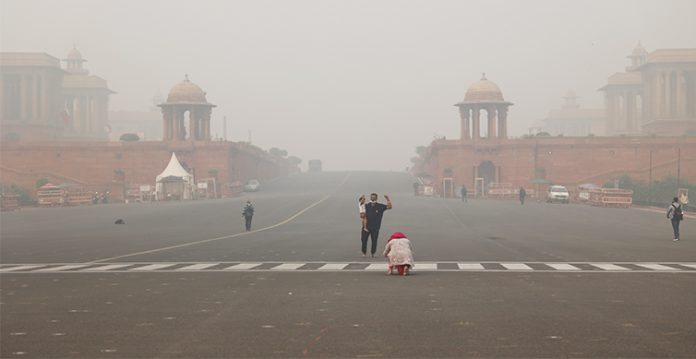The aftermath of the irresponsibility showed by people during the Diwali festivities emerged on Friday morning with Delhi marking its footprint in the AQI 500 category. The air quality index worsened to “severe” after the ban on firecrackers fell on deaf ears and the national capital was engulfed in smoke and fog erupting from the harmful gases released post cracker burning.
While the AQI lingered around 382 last evening, it reached the 500-mark at around 8 pm as the smoke rose up with the help of the low temperatures and wind speeds.
Accumulation of toxic pollutants gained traction as the PM 2.5 concentration went up to 999 per cubic metre, measured at the Jawaharlal Nehru stadium on Friday morning. Shockingly, this is nearly 40 times more than the WHO prescribed safety limit of 25 and is capable of causing cardiovascular and respiratory diseases like lung cancer in even healthy individuals.
Speaking about the aftereffects of violating the ban, RK Jenamani, India Meteorological Department (IMD), Delhi said, “Overall air quality is in ‘severe’ category today after bursting of firecrackers on Diwali and presence of bio-mass pollutants in Delhi. The air quality and fog condition to improve once wind speed picks up. No wind and high moisture is causing fog condition.”
Though Delhi tops the list of all the national capitals in the world with the worst air quality, it crossed its own bad records on Friday. The adjoining regions saw no big difference as Noida recorded 431, Gurgaon 423, Faridabad 414 and Ghaziabad 442 after people paid no heed to the already grim air pollution situations in the city.
The complete ban on firecrackers in the national capital did not seem to have affected the sales and burning of the concoction of harmful chemicals. “The firecracker ban didn’t seem to be successful in Delhi, which led to hazardous pollution levels adding on top of existing perennial sources,” Sunil Dahiya, Analyst, Centre for Research on Energy and Clean Air (CREA) said.
Delhites woke up on Friday morning with smoke and toxic fog blanketing the entire city. This was a result of people bursting crackers since Thursday evening in South Delhi’s Lajpat Nagar, East Delhi’s Shahdara, West Delhi’s Paschim Vihar and North Delhi’s Burari.
By the end of the day, several people were complaining of watery eyes and itchy throat- an early sign of respiratory problems.
Though 14 districts of Haryana too had the ban in place, there were only certain restrictions imposed in other areas.
The deadly smog and its hazardous smoke deteriorating the air quality of Delhi is here to stay for sometime as the Centre-run System of Air Quality and Weather Forecasting And Research (SAFAR) said that the AQI will remain quite in the same range till November 7th‘s evening, Sunday.
Though there will be an improvement post this, it still won’t be beyond the “Very Poor” category.
According to weather experts, the air quality was a result of an amalgamation of reasons like low temperature low mixing height, calm winds and the most obvious mixture of poisonous gases from stubble burning, firecrackers and other sources.
Visibility at the Indira Gandhi International Airport too was reduced to 600-800 metres since Thursday morning.







